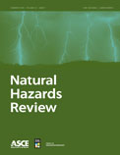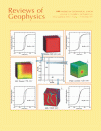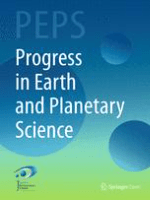
Natural Hazards Review
metrics 2024
Uniting Disciplines to Mitigate Natural Disasters
Introduction
Natural Hazards Review, published by the ASCE-Amerc Soc Civil Engineers, is a prominent journal dedicated to advancing the understanding of the impacts of natural hazards on civil infrastructure, the environment, and societal dynamics. With a focus on interdisciplinary approaches, this journal plays a vital role in the fields of Civil and Structural Engineering, Environmental Science, and Social Sciences, evidenced by its Q2 rankings across multiple categories in 2023. Throughout its publication history since 2000, the journal has emerged as a key resource for researchers, practitioners, and students, providing innovative insights and fostering critical discussions regarding disaster risk reduction, resilience strategies, and sustainable practices. Although it does not currently offer open access options, authors and readers alike can benefit from its robust contributions as it continues to shape the discourse on mitigating the effects of natural hazards. By disseminating high-quality research, Natural Hazards Review is instrumental in promoting a comprehensive understanding of this pressing global issue.
Metrics 2024
 0.52
0.52 1.80
1.80 2.50
2.50 68
68Metrics History
Rank 2024
Scopus
IF (Web Of Science)
JCI (Web Of Science)
Quartile History
Similar Journals

Acta Geophysica
Unveiling the Mysteries of Our Planet Through Research.Acta Geophysica is a distinguished peer-reviewed journal published by Springer International Publishing AG, focusing on the dynamic field of Geophysics. With an ISSN of 1895-6572 and an E-ISSN of 1895-7455, this journal stands as a critical platform for disseminating cutting-edge research and advancements from 2006 to 2024. Acta Geophysica maintains a respectable impact factor, reflecting its contribution to the global scientific community, where it ranks in the Q2 category within Geophysics, and is positioned 55 out of 165 in Scopus' Earth and Planetary Sciences, placing it in the 66th percentile. Based in Switzerland, the journal invites submissions that address a diverse range of topics, including seismic studies, geodynamics, and climate change impacts, thereby fostering in-depth discussions and innovative solutions in geophysical research. Access to the journal's content is offered through subscription-based options, ensuring a sustainable model for high-quality scientific exchange. By connecting researchers, professionals, and students, Acta Geophysica plays a vital role in advancing the understanding of Earth's processes and contributing to the field's evolution.

Journal of Safety Science and Resilience
Navigating the complexities of safety with expert analysis.Welcome to the Journal of Safety Science and Resilience, a pioneering platform dedicated to advancing knowledge in the fields of safety, risk, reliability, and quality. Published by KEAI PUBLISHING LTD and based in China, this Open Access journal has made significant strides since its inception in 2020. With an impressive impact factor and a distinguished Q1 ranking in various categories, including Safety Research and Safety, Risk, Reliability and Quality, it serves as an authoritative resource for researchers, professionals, and students alike. The journal's commitment to disseminating high-quality research is reflected in its exceptional Scopus rankings, with top positions in decision sciences and social sciences. As we converge into the future with volumes planned up to 2024, engaging contributions focused on contemporary challenges and innovations in safety science are more essential than ever. Explore groundbreaking studies and elevate your understanding of resilience in the face of uncertainty through this invaluable academic resource.

Journal of Indian Geophysical Union
Advancing Knowledge in Geophysical SciencesThe Journal of Indian Geophysical Union, published by the Indian Geophysical Union (IGU), serves as a vital platform for disseminating research in the field of geophysics. With the ISSN 0257-7968, this journal primarily focuses on studies related to geophysical sciences, including but not limited to, seismicity, environmental geophysics, and geodynamics, contributing to a better understanding of the Earth's processes. The journal is committed to quality research and aims to foster a collaborative environment for researchers, professionals, and students in India and internationally. Although currently not designated as an Open Access publication, it plays an essential role in connecting academia with practical applications in geophysical research. Based in Hyderabad, India, the Journal of Indian Geophysical Union continues to be an essential resource for those seeking to expand their knowledge and engage with the latest findings in geophysics.

Bulletin of Geophysics and Oceanography
Bridging Disciplines for a Sustainable EarthBulletin of Geophysics and Oceanography is a distinguished open-access journal published by the IST NAZIONALE DI OCEANOGRAFIA E DI GEOFISICA in Italy, dedicated to advancing knowledge in the multidisciplinary fields of geophysics, oceanography, and related engineering disciplines. Since its inception in 2000, the journal has been pivotal in providing a platform for innovative research and comprehensive reviews that support the scientific community's efforts to understand Earth's dynamic systems. With an ISSN of 2785-339X and an E-ISSN of 2785-2970, the journal operates under an open-access model, ensuring that groundbreaking discoveries reach a wider audience without barriers. The Bulletin is categorized in the Q4 quartile for the years 2023 in Computers in Earth Sciences, Geophysics, Geotechnical Engineering and Engineering Geology, and Oceanography. It ranks within the 41st and 37th percentiles in geophysics and oceanography respectively, highlighting its emerging influence in the scientific community. The journal welcomes submissions that span across fundamental research and applied sciences, aiming to foster collaboration among researchers, professionals, and students, thereby contributing to the sustainable management of oceanic and terrestrial resources.

Journal of Mountain Science
Charting New Frontiers in Earth-Surface ProcessesThe Journal of Mountain Science, published by SCIENCE PRESS, is a distinguished academic journal dedicated to advancing the understanding of mountain environments and their significance in various scientific domains. With an ISSN of 1672-6316 and an E-ISSN of 1993-0321, this journal has carved a niche in the field of Earth sciences, earning a commendable Q2 ranking in categories such as Earth-Surface Processes, Geography, Planning and Development, and Geology, as well as a Q3 ranking in Global and Planetary Change. Since its inception in 2007, the journal has been pivotal in fostering interdisciplinary research that addresses critical environmental issues, making it an essential resource for researchers, professionals, and students alike. While currently not offering open access, it provides valuable insights into areas including nature conservation and landscape management, with a focus on the unique challenges faced by mountainous regions. Located in Beijing, China, the Journal of Mountain Science continues to promote scholarly discourse that contributes to the sustainable development of mountain communities and ecosystems until 2024 and beyond.

All Earth
Bridging Disciplines for Earth’s FutureAll Earth is an esteemed open-access journal published by Taylor & Francis Ltd, dedicated to multidisciplinary research in the fields of Earth and Planetary Sciences, Global and Planetary Change, as well as Management, Monitoring, Policy, and Law. Since its inception in 2021, All Earth has swiftly positioned itself in the academic community, achieving notable rankings such as Q2 in Earth and Planetary Sciences and Q3 in related fields, showcasing its commitment to high-quality interdisciplinary scholarship. Researchers and professionals can benefit from its accessible content, which contributes to the ongoing discourse on critical environmental issues and innovative solutions for sustainable development. The journal is based in the United Kingdom and continues to be a vital source of information and inspiration for students and scholars aiming to tackle the pressing challenges of our planet through rigorous scientific inquiry and policy analysis.

COASTAL ENGINEERING JOURNAL
Connecting Research and Practice in Coastal EngineeringCOASTAL ENGINEERING JOURNAL, published by Taylor & Francis Ltd, stands as a pivotal resource in the fields of Civil and Structural Engineering, Modeling and Simulation, and Ocean Engineering. Since its inception, with publishing spans from 1975 to the present, the journal has fostered innovative research and practical solutions to address the complex challenges posed by coastal environments. With its current positioning in the Q2 category for its respective disciplines in 2023, the journal's rigorous peer-review process ensures that only high-quality studies are disseminated, highlighting its commitment to excellence in scholarly communication. Although currently not an Open Access publication, the journal provides access options that promote wider engagement within the academic community. Researchers, professionals, and students seeking to deepen their understanding of coastal engineering will find a wealth of knowledge in its pages, reinforcing the journal's importance as a leading forum for advanced discourse in this dynamic field.

REVIEWS OF GEOPHYSICS
Advancing Geophysical Research, One Review at a Time.REVIEWS OF GEOPHYSICS is a prestigious journal published by the American Geophysical Union, renowned for its critical contributions to the field of geophysics since its inception in 1963. With an impact factor that signifies its scholarly excellence and a Q1 ranking in Geophysics (2023), this journal is the leading platform for disseminating groundbreaking research across Earth and Planetary Sciences, currently holding the top position in its category. As a valuable resource for researchers, professionals, and students alike, it offers comprehensive reviews that synthesize significant advancements and theoretical insights, fostering the exchange of innovative ideas within the geophysical community. Although typically not an open-access journal, its influence is bolstered by its rigorous peer-review process and publication standards, ensuring that each article meets the highest academic criteria. Well-positioned in the heart of Washington, DC, the journal remains an essential reference for those seeking to remain at the forefront of geophysical research developments.

Progress in Earth and Planetary Science
Catalyzing global discourse in Earth and planetary studies.Progress in Earth and Planetary Science is a premier open-access journal published by Springer, dedicated to advancing the field of Earth and planetary sciences. Since its inception in 2014, this journal has emerged as a prominent platform, achieving a Q1 ranking in the Earth and Planetary Sciences category, reflecting its high impact and rigorous peer-review process that ensures the highest quality of published research. With its broad scope encompassing diverse subfields within the Earth sciences, the journal aims to foster interdisciplinary collaboration and innovation among researchers, professionals, and students. The journal's commitment to accessibility through its open access model promotes the dissemination of knowledge globally, allowing critical research findings to be shared widely within the scientific community. Located in the United Kingdom, Progress in Earth and Planetary Science continues to play an essential role in shaping the future of Earth and planetary research from 2014 to 2024 and beyond.

NATURAL HAZARDS AND EARTH SYSTEM SCIENCES
Fostering Global Collaboration in Earth SciencesNATURAL HAZARDS AND EARTH SYSTEM SCIENCES, an esteemed journal published by COPERNICUS GESELLSCHAFT MBH, focuses on the interdisciplinary study of natural hazards and their impact on Earth system processes. Since its inception in 2001, this Open Access journal has been instrumental in disseminating high-quality research, facilitating a global exchange of knowledge in the field of Earth and Planetary Sciences. With an impressive Q1 ranking in its category and a commendable Scopus Rank of 22 out of 195, it serves as a crucial platform for researchers striving to understand and mitigate the risks associated with natural hazards. The journal is committed to enhancing environmental resiliency and promoting sustainable practices, making it essential reading for scholars, practitioners, and policymakers dedicated to tackling the challenges posed by our dynamic planet. Based in Germany, at BAHNHOFSALLEE 1E, GOTTINGEN 37081, it continues to support the growing body of knowledge that bridges scientific research with practical application.